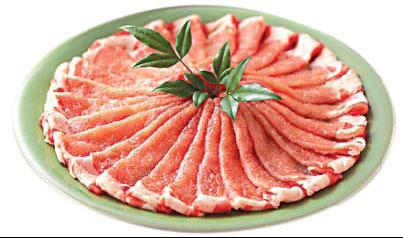|

|
|
Mutton is one of the most popular dishes in Inner Mongolia. [File photo] |
Hearty fare abounds in Inner Mongolia autonomous region where even during the summer months, overnight temperatures on the grasslands plummet to low single figures. A recent trip up north allowed me a brief foray into this stomach lining cuisine.
The traditional lifestyle of the nomadic Mongolian herdsman meant a heavy reliance on animal products - meat and dairy products. Starchy staples included wheat, barley, oats and millet in the form of noodles, dumplings and fried grain.
Visitors traversing the Mongolian grasslands today can develop an aversion to the omnipresence of mutton - which features at every meal and scents every yurt. Nevertheless, the quality of the Mongolian meat - thanks to months of the animals chomping on the vast green pastures and drinking fresh water - cannot be disputed.
Free range, grass-fed animals also have a higher content of omega-3 fatty acids in their meat and milk versus those that are barn-fed.
On special occasions, or when wealthy tourists splash out, whole lambs are stuffed with spices and roasted until golden over an open fire (kao quan yang).

The family we stayed with said a whole lamb fetches around 1,000 yuan ($147) in the market, so understandably this is not an everyday dish.
More commonly, mutton is served as shouba rou - boiled mutton eaten by hand. The mutton, usually from the leg of the lamb, is placed in an iron pot with water and no seasoning and boiled until tender. Once cooked, it is sliced off with a knife and may be dipped into spices or seasoning before being eaten by hand.
Lamb is also minced with vegetables, such as onion and carrot, and used as filling for wheat wrappers to make dumplings known as shaomai. These are then pinched into the shape of pomegranates before being boiled or steamed for a few minutes.
To my mind, Mongolian Hot Pot (huo guo) is one of the region's most supreme and more balanced meals (depending on the fattiness of the meat you select). Unlike hot pot from other Chinese regions, it lacks the burning spice but is packed with a melange of flavors. Wafer thin slices of mutton, lamb, tofu, greens, noodles and mushrooms can be selected to blanch in the soup.
Dipping sauces of sesame may or may not be provided. Branches of the Mongolian franchise Little Sheep (Xiao Fei Yang) can be found in major Chinese cities such as Beijing, Shanghai and Shenzhen and as far afield as the US and Canada.
The traditional use of milk foods (known as "white food") in Mongolian cuisine is in contrast to other parts of China which tend to avoid dairy foods. Mongolians have traditionally made use of milk from the five domestic animals they usually keep - sheep, cows, goats, camels and horses.
Dried milk curds are baked in the sun during the summer to make aarul for the winter; the milk from female horses is fermented to produce aireg; and a sour yoghurt called tarag is made. Another typical food is a hard dried cheese called eetsigii.
Milk is a staple drink, served with most meals. In contrast to the recent fad for sickly sweet milk tea seen in many Chinese cities, Mongolian tea is seasoned with salt. Brick tea is brewed with water in a pan, and once good and strong, sheep's or cow's milk is added along with a pinch of salt. The milk tea is ladled in bowls. At breakfast and other meals, various forms of bread or you bing (fried pancakes) are dipped into the tea.
Undoubtedly, Mongolian cuisine is high in fat and overall calories, but if you aim to match your consumption of Mongolian goodies with physical activity to rival a Mongolian herdsman, then all should be well!
This nutrition-related column is written by Nina Lenton, a qualified dietitian living and working in Beijing. Contact her at nina_lenton@hotmail.com.
(China Daily September 17, 2008)